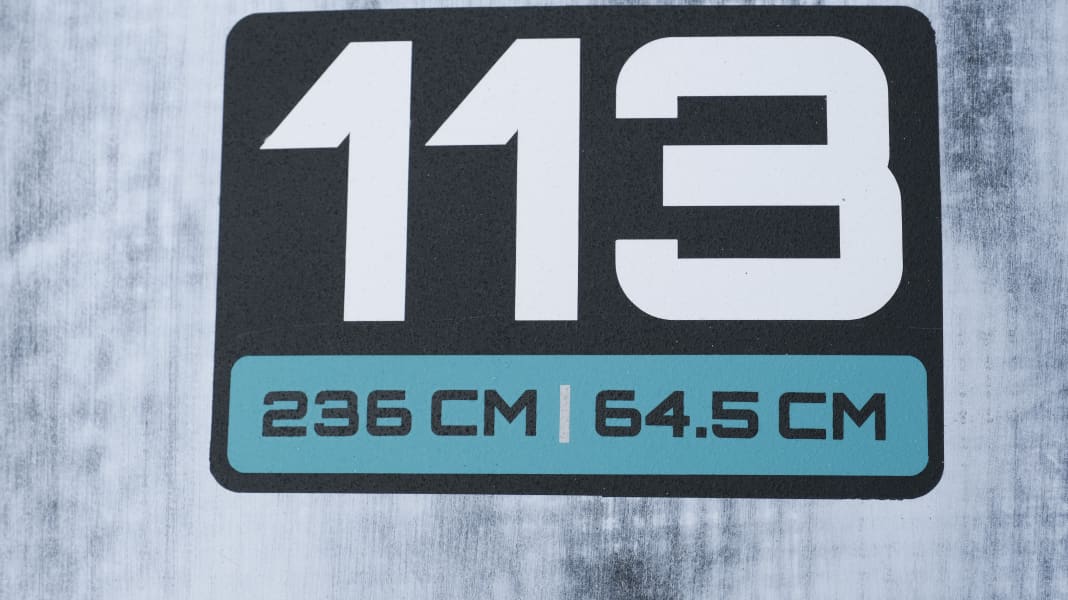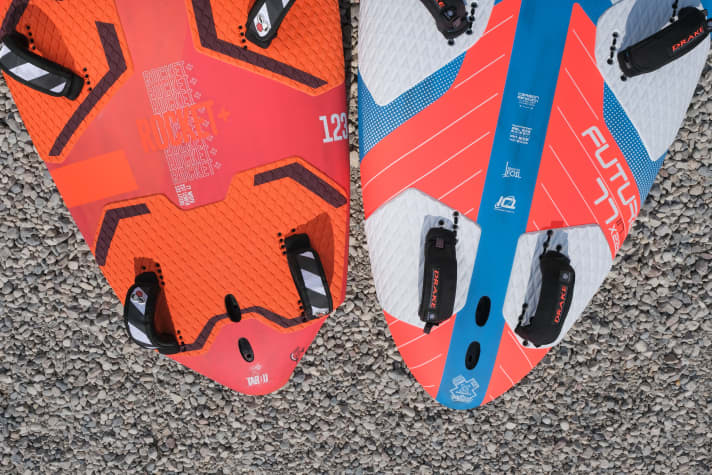
For most windsurfers, the volume of their boards is a key criterion, which is why the litres are usually stated when talking about board size. These are often included in the name and are displayed - sometimes more, sometimes less prominently - on the boards.
While beginners should choose a volume with plenty of buoyancy reserve (rule of thumb: board size in litres = body weight in kg + 100), advanced riders can also opt for significantly smaller boards. Their volume is then sometimes only just above the body weight, so that they sink a little when travelling in the dunes. Such boards used to be called "sinkers". The less wind, the more volume is needed to get planing
The length and width in centimetres are usually much smaller next to it. These are usually less decisive for the riding characteristics - but can be helpful when it comes to whether a board still fits in the car or in a board bag.
Special case freerace and slalom: width instead of litres
In the freerace and slalom sector, some brands prioritise width over volume. This varies from manufacturer to manufacturer and sometimes even from year to year, so a little confusion is inevitable. The background to this is that in the racing sector, the width is decisive for how much pressure can be applied to the fin.
For heavy surfers, over 90 or 95 kilos for example, it does of course matter whether 117 or 135 litres are carried when planing and tacking. Once planing, the overall width and the tail width become much more important. Freerace boards with the same width are more comparable in terms of their range of use and suitable sail sizes than freerace boards with the same volume.

The length of the boards used to be decisive
The volume of the boards only took centre stage with the advent of short, wide boards around 20 years ago. Before that, the length of the boards was usually given in centimetres. The F2 Wave 250, for example, was a radical professional board at the end of the 90s, while the Xantos 295 was a sporty freerider for the general public. Back then, the difference in length was almost half a metre, but today it is often only a few centimetres - so volume and width are much more meaningful.
